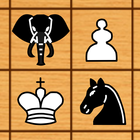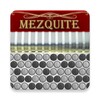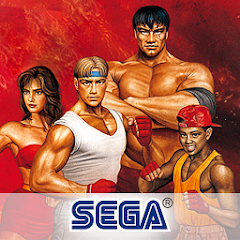Shatranj1.3


Rating

Genre
GAMES

Size
15.7 MB
Version
1.3
Update
Jul 11 2024
Download Shatranj APK for Android - free - latest version. Download now!
 Download
Download
Shatranj is a board game, which is known as old form of chess.
Shatranj is an ancient chess, as played in the Sasanian Empire.
This application includes several levels CPU.
It shows which pieces you can move, so you can play Shatranj even if you don't know the rules.
What's New in the Latest Version 1.3
Last updated on Jan 18, 2024
2022/06/26 ver1.0 Released
2022/07/01 ver1.1 Japanese, Spanish, Russian version add.
The origins of Shatranj can be traced back to the ancient Indian game of Chaturanga, which itself likely evolved from even older dice and race games. By the 7th century, Chaturanga had made its way across the Persian Empire, undergoing transformations that would ultimately give rise to Shatranj. The Arabic name, Shatranj, is derived from the Persian "Chatrang," further solidifying the connection between the two.
The game board of Shatranj, like its modern counterpart, consists of 64 squares arranged in an 8x8 grid. However, the movement and power of the pieces differed significantly from modern chess. The Shah, equivalent to the King, moved only one square in any direction. The Firzan, the precursor to the Queen, was a relatively weak piece, moving only one square diagonally. The Fil, or Bishop, leaped two squares diagonally, jumping over any intervening piece. The Faras, or Knight, moved identically to the modern Knight. The Rukh, the predecessor of the Rook, moved any number of squares horizontally or vertically. The pawns, or Baidaq, moved one square forward, capturing diagonally one square forward. There was no initial double-step move for pawns, and upon reaching the eighth rank, they promoted only to Firzan.
The objective of Shatranj was to checkmate the opponent's Shah. A checkmate occurred when the Shah was under immediate attack and had no legal move to escape. Unlike modern chess, a stalemate, where the player to move has no legal moves but is not in check, was considered a win for the player delivering the stalemate.
The slower pace of Shatranj, compared to modern chess, fostered a distinct strategic approach. The limited mobility of the Firzan and Fil, along with the absence of castling, often resulted in closed positions and protracted maneuvering. Players focused on controlling key squares and gradually restricting the opponent's options. The emphasis on positional play and strategic planning over tactical combinations characterized the game.
Shatranj flourished under the patronage of the Abbasid Caliphate. Caliphs and their courts supported the development of the game, attracting skilled players and sponsoring tournaments. Numerous treatises and manuscripts were written on Shatranj, analyzing opening strategies, endgame techniques, and even the philosophical implications of the game. These works, often penned by renowned scholars and mathematicians, contributed to the development of a rich body of Shatranj theory.
The influence of Shatranj extended beyond the Islamic world. As trade routes crisscrossed continents, the game spread to Europe, eventually evolving into the modern game of chess. The changes that transformed Shatranj into chess, including the enhanced power of the Queen and Bishop, and the introduction of castling, dramatically increased the pace and tactical complexity of the game.
Despite being superseded by modern chess, Shatranj remains a significant historical artifact. It offers a glimpse into the intellectual and cultural landscape of the medieval Islamic world, showcasing the sophisticated strategic thinking and analytical skills cultivated during that era. Studying Shatranj provides valuable insights into the evolution of chess and the enduring appeal of strategic board games throughout history. Its legacy continues to resonate, reminding us of the rich history and enduring fascination with the game of kings.
4 / 5 ( 678 votes )









